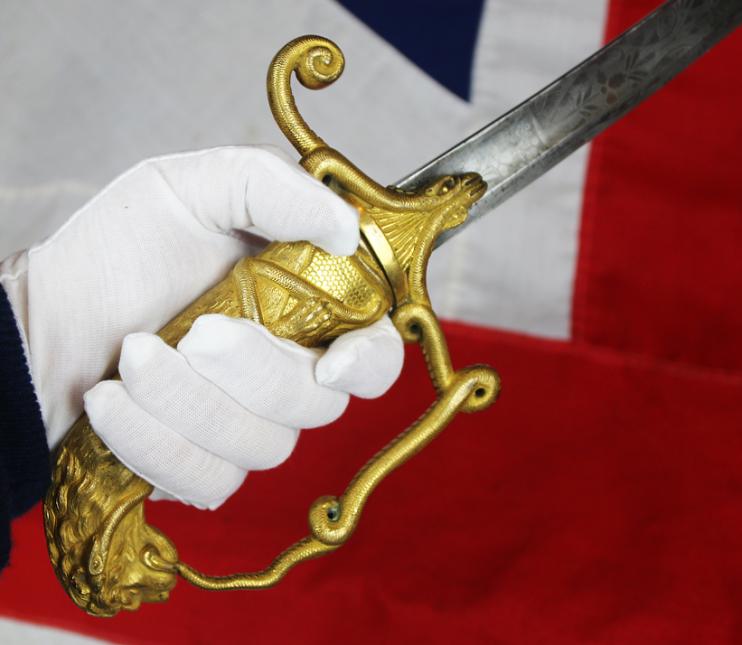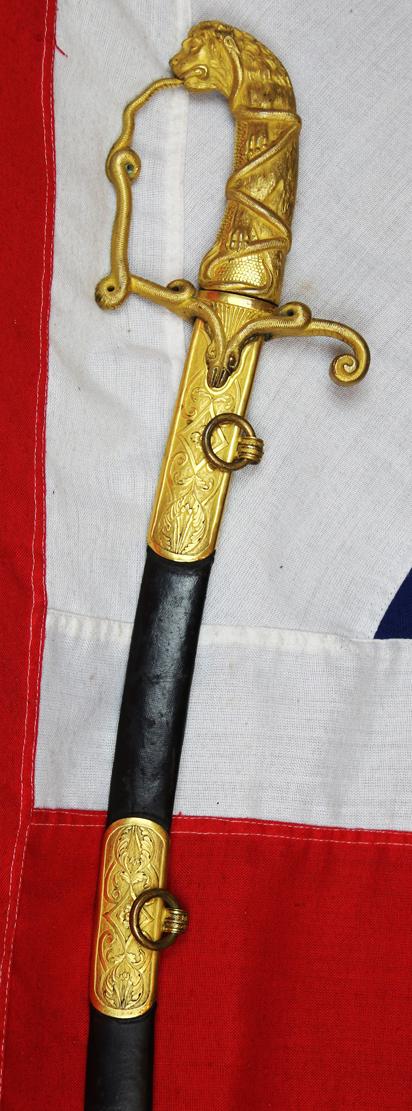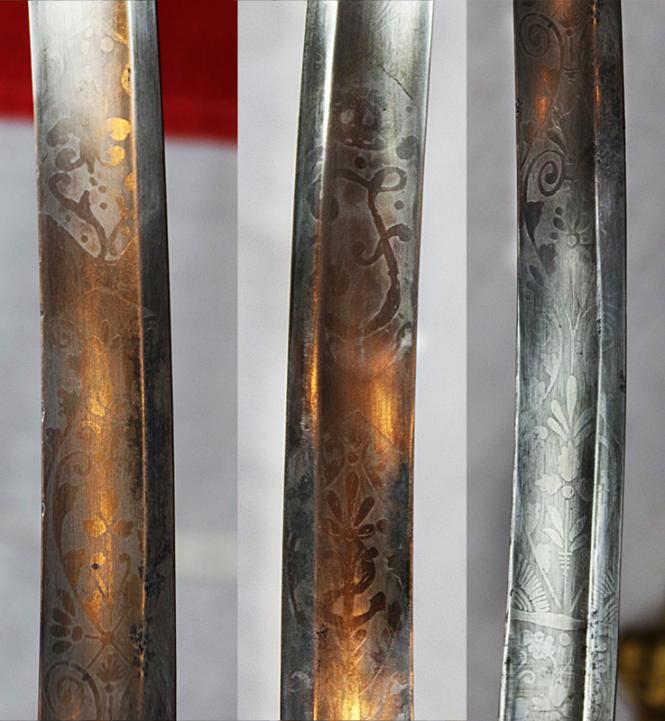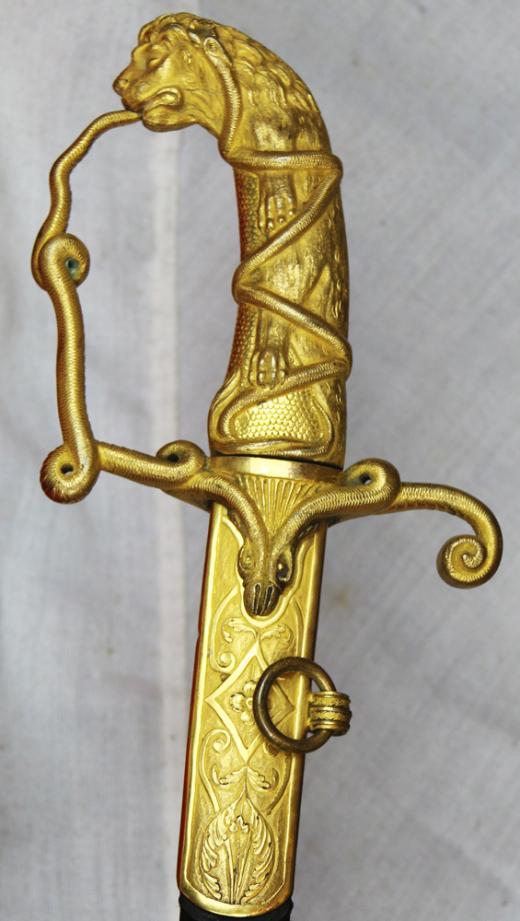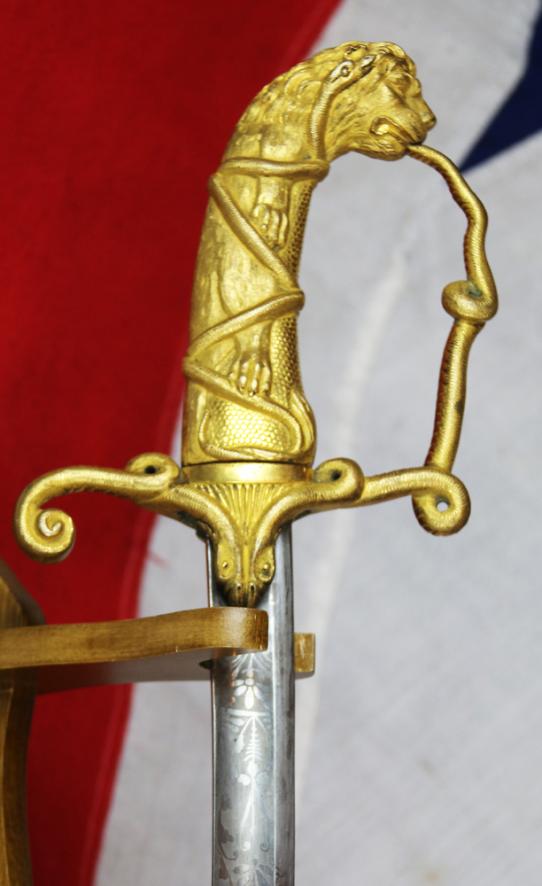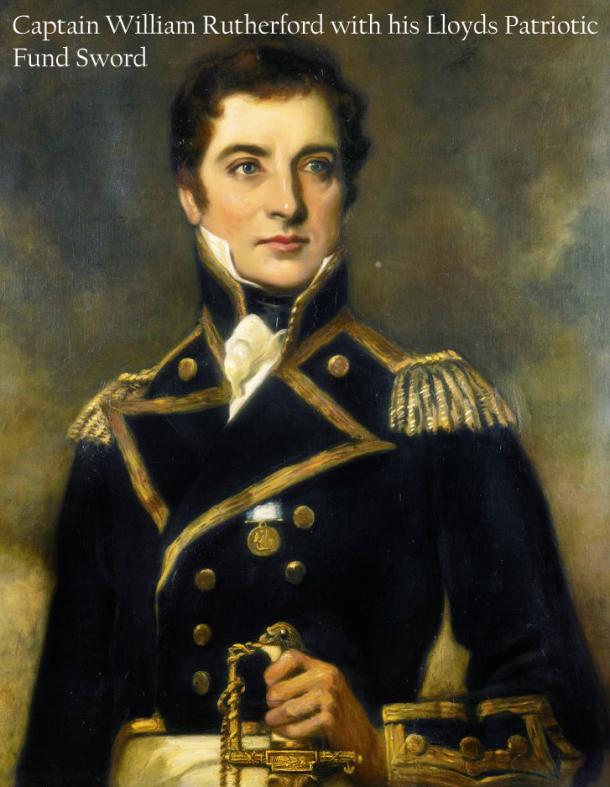Simply Fabulous Napoleonic Wars 'Battle of Austerlitz' Surrendered Sword Of An Austrian Marshal. An Austrian Marshal's Grade Sword. Potentially of Lieutenant Field Marshal Franz von Weyrother. Formerly Looted by Goering In WW2 From Its French Owner
This sword must be ranked in quality to equal the swords made for the Lloyds Patriotic Fund Sword heroic recipients, and Napoleon's 'Marshal's of France'.
One could even see it might have once been the sword of Lieutenant Field Marshal Franz von Weyrother. Of course this can be nothing more than conjecture.
Formerly this magnificent sword was part of the world renown collection of WW2 French hero Dr Raymond Wagnier. It has a curved slender blade finely etched with scrolling foliage and the imperial crowned 'F' cypher of the last Holy Roman Emperor, Francis II of Austria. The sword's impressive and magnificent chiselled gilt hilt is incredibly finely decorated with scrolling serpents, forming the cross and knuckle guard emanating from the mouth of the Nemean lion's pommel, and and binding the lion's skin to the snakeskin pattern chiselled grip, contained in its finest gilt mounted leather wrapped wooden scabbard, the mounts decorated with acanthus, strapwork and flowerheads. The Nemean lion's head and skin and intertwined serpents were also the dominant design of the fabulous hilt's of all the Lloyds Patriotic Fund swords, that were awarded to heroes of the Napoleonic Wars, that today can fetch up to £220,000, This sword must be ranked of similar quality to those Lloyds swords. The sword was formerly in the private, world renown collection, of Dr Raymond Wagnier. He was a French hero of the occupation of France during WW2, and during raids by the RAF in 1943-44, on the Lille Railway, at extreme risk of reprisal, he rescued a wounded British airman, who would have been undoubtedly executed. After the Liberation of France he was offered an honour by the King and British government, but to his extraordinary credit, he refused, stating he was doing nothing more than his duty.
His first collection was looted by the Hermann Goering's German 'looting squad' and the French Vichy, but after the war he was able to reassemble his eminent collection once more.
After his death in 1989 his collection, including this incredible sword, was sold by his estate in 1990 in Monaco. It was one of the foremost collections of Belles Armes Anciennes and Objet Napoleonique in the world. The Battle of Austerlitz (2 December 1805/11 Frimaire An XIV FRC), also known as the Battle of the Three Emperors, was one of the most important and decisive engagements of the Napoleonic Wars. In what is widely regarded as the greatest victory achieved by Napoleon, the Grande Armée of France defeated a larger Russian and Austrian army led by Emperor Alexander I and Holy Roman Emperor Francis II. The battle occurred near the town of Austerlitz in the Austrian Empire (modern-day Slavkov u Brna in the Czech Republic). Austerlitz brought the War of the Third Coalition to a rapid end, with the Treaty of Pressburg signed by the Austrians later in the month. The battle is often cited as a tactical masterpiece, in the same league as other historic engagements like Cannae or Gaugamela. Lloyd's Patriotic Fund was founded on 28 July 1803 at Lloyd's Coffee House, and continues to the present day. Lloyd’s Patriotic Fund now works closely with armed forces charities to identify the individuals and their families who are in urgent need of support.
The contributors created the fund to give grants to those wounded in service to the Crown and to set up annuities to the dependents of those killed in action. The Fund also awarded prizes to those British combatants who went beyond the call of duty. The rewards could be a sum of money, a sword or a piece of plate. The awards were highly publicized to help raise morale during wartime. In 1807 the fund also donated £61,000 to the Royal Naval Asylum, giving Lloyd's Patriotic Fund the enduring right to nominate children to the school.
On 24 August 1809 the Fund held a general meeting of its subscribers. The subscribers decided at that time to discontinue awards for merit. The Peninsular War was putting such demands on the Fund that it was felt that priority would have to go to support for the wounded and the dependents of those killed. Still, when the Fund awarded officers money for wounds received, some officers asked that the Fund give them an inscribed sword instead.The Fund issued 15 swords worth £30 each, to midshipmen, masters' mates and Royal Marine lieutenants. Also, 91 swords worth 50 pounds each went to naval lieutenants and Royal Marine captains. It issued 35 swords worth £100 each to commanders and naval captains. In addition, it issued 23 swords, worth £100 each, to naval captains who fought at Trafalgar. Some 60 officers requested a piece of plate of equal value instead of a sword. Lastly, a number of officers opted for cash instead, either for themselves or to distribute to their crew.
One engagement might result in multiple awards. When a cutting-out party from HMS Franchise captured Raposa in 1806, naval lieutenants John Fleming and Peter Douglas, and Lieutenant of Marines Mend, each received a sword worth £50, while Midshipman Lamb received one worth £30.
Not all the officers who received swords or other merit awards were naval officers or Royal Marines. Some were captains of privateers or East Indiamen. The Fund awarded Mr. Thomas Musgrave, captain of the private man of war Kitty an honour-sabre worth £30 for the action in which Kitty captured the Spanish ship Felicity (or Felicidad). After the Battle of Pulo Aura, Lloyd's Patriotic Fund gave each captain a sword worth £50, and one to Lieutenant Robert Merrick Fowler (RN), who had distinguished himself in a variety of capacities during the engagement, and one worth £100 to Captain Nathaniel Dance, who had been the commodore of the fleet. We actually have Captain Dance’s regular high rank combat sword, fully named to him, that he used as commodore of the fleet, plus, his from life portrait.
A portion of this sword's history was mislaid before it was sold at Monaco in 1990, but fortunately we were present at the auction in Monte Carlo, and thus recognised it immediately, and we knew its entire and full provenance when we were offered it for sale recently.
When the War of the Third Coalition broke out, Weyrother was promoted to Generalmajor (major general). After the death of the Allied army chief of staff, Johann Heinrich von Schmitt at the Battle of Dürenstein on 11 November 1805, the Allied commander-in-chief, the Russian General Mikhail Kutuzov requested that Weyrother be made chief of staff of the Austro-Russian army. Although the two men soon fell out, as Kutuzov wanted a defensive strategy, Weyrother gained the favour of Tsar Alexander I of Russia with his aggressive strategy. With the Tsar's support, he created the plan for the Battle of Austerlitz in which the Allies were crushed by Napoleon on 2 December 1805. The defeat was so bad, the Russians accused Weyrother of being in the pay of the French. Weyrother withdrew from military life and retired to Vienna, where he died aged 51. His inappropriate dispositions for the battle at Austerlitz are satirised by Leo Tolstoy in War and Peace.
Code: 23374
12750.00 GBP


